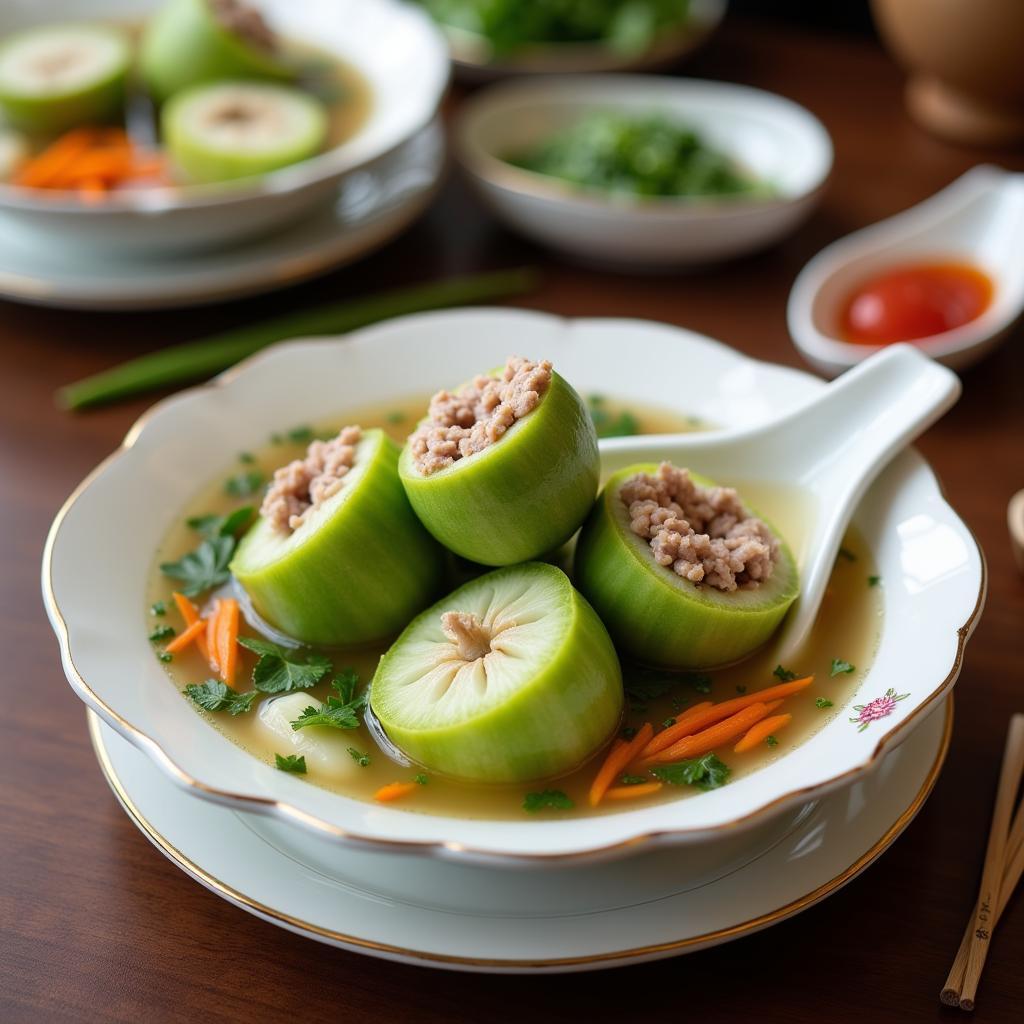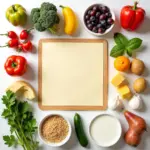Tet, the Vietnamese Lunar New Year, is a vibrant celebration filled with rich traditions, colorful decorations, and of course, a feast of delicious foods. These 18 traditional Tet dishes represent good fortune, prosperity, and family unity, making them essential parts of the holiday.
Exploring the Culinary Delights of 18 Vietnamese Tet Dishes
From savory bánh chưng to sweet mứt, each dish tells a story and carries symbolic meaning. This exploration of 18 Vietnamese Tet dishes offers a glimpse into the heart of Vietnamese culture and the significance of food during this special time of year. Whether you’re planning your own Tet celebration or simply curious about Vietnamese cuisine, this guide will introduce you to some must-try dishes.
Must-Try Savory Dishes for Tet
These savory delights are staples on every Tet table, offering a balance of flavors and textures.
Bánh Chưng (Sticky Rice Cake)
This iconic square cake, made of glutinous rice, mung beans, and pork belly, symbolizes Earth and is a cornerstone of Tet celebrations. Its preparation is a communal activity, often involving the whole family.
Giò Chả (Vietnamese Sausage)
Giò lụa (smooth sausage) and giò thủ (headcheese) are essential Tet dishes, representing wealth and prosperity. Their savory flavors and unique textures complement many other Tet foods.
Thịt Kho Tàu (Caramelized Pork with Eggs)
This rich and flavorful dish features braised pork belly and eggs in a sweet and savory sauce. It’s a comforting and satisfying dish, perfect for sharing with family.
Canh Khổ Qua (Bitter Melon Soup)
Despite its name, this soup represents overcoming hardships and embracing the sweetness of life. The bitterness of the melon is balanced by the savory broth and other ingredients.
 Canh Kho Qua: Vietnamese Bitter Melon Soup for Tet
Canh Kho Qua: Vietnamese Bitter Melon Soup for Tet
Sweet Treats and Delicacies for Tet
These sweet treats symbolize good luck and happiness, adding a touch of indulgence to the Tet celebrations.
Mứt (Candied Fruits)
A colorful array of candied fruits and vegetables, such as ginger, coconut, and kumquat, adds a sweet and tangy dimension to the Tet spread. They are enjoyed as snacks and symbolize a sweet and prosperous new year.
Kẹo Lạc (Peanut Candy)
This crunchy and sweet treat, made with roasted peanuts and caramelized sugar, is a popular snack during Tet. Its simplicity and deliciousness make it a favorite among children and adults alike.
Bánh Tét (Sticky Rice Cake Log)
Similar to bánh chưng, bánh tét is a cylindrical sticky rice cake filled with various ingredients like mung beans, pork, or banana. It’s a regional variation enjoyed in Southern Vietnam.
Other Essential Tet Dishes
These dishes complete the Tet feast, adding variety and cultural significance to the celebration.
Nem Rán (Fried Spring Rolls)
These crispy spring rolls, filled with minced pork, vegetables, and vermicelli noodles, are a popular appetizer and symbolize prosperity and good fortune.
Gỏi (Salad)
Various types of gỏi, such as gỏi cuốn (fresh spring rolls) and gỏi đu đủ (papaya salad), offer refreshing flavors and textures. They represent freshness and new beginnings.
Xôi (Sticky Rice)
Sticky rice, often cooked with gấc fruit for a vibrant red color, is a symbol of good luck and is served with various savory dishes.
Conclusion: Experiencing the Richness of 18 Vietnamese Tet Dishes
These 18 traditional Vietnamese Tet dishes offer a delicious journey into the heart of Vietnamese culture. From savory staples like bánh chưng to sweet treats like mứt, each dish plays a vital role in celebrating the Lunar New Year. By experiencing these culinary delights, you gain a deeper understanding of the traditions and values that make Tet such a special occasion.
FAQ: Common Questions About Vietnamese Tet Dishes
- What is the significance of Banh Chung during Tet? Banh Chung symbolizes Earth and is a central part of the Tet celebration, representing the connection to agriculture and ancestors.
- Are these dishes only eaten during Tet? While most are traditionally associated with Tet, some, like Gio Cha and Nem Ran, are enjoyed year-round.
- Where can I try these dishes? Many Vietnamese restaurants offer special Tet menus. You can also try making them at home!
- What is the symbolism of the color red in Tet dishes? Red symbolizes good luck, prosperity, and happiness.
- Are there vegetarian versions of these dishes? Yes, many dishes can be adapted to be vegetarian-friendly, substituting meat with tofu or mushrooms.
- What is the typical order of eating these dishes during Tet? There’s no strict order, but often Banh Chung and Gio Cha are among the first dishes enjoyed.
- What drinks are typically served with these dishes? Tea, nước mắm chấm (dipping sauce), and sometimes beer or wine are common accompaniments.
Need Assistance with Your Hanoi Travel Plans during Tet?
Contact TRAVELCAR for seamless transportation solutions during your Tet celebrations in Hanoi. We offer a range of vehicle rentals, including 16-seater, 29-seater, and 45-seater buses, perfect for family gatherings or group tours. We also provide airport transfers and customized tour packages to explore the vibrant cultural attractions of Hanoi.
Call us at 0372960696, email us at TRAVELCAR[email protected], or visit our office at 260 Cầu Giấy, Hà Nội. Our 24/7 customer service team is ready to assist you.
